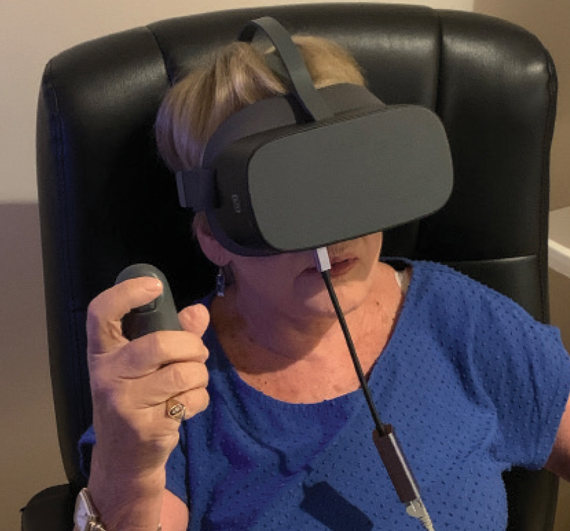 |
|
A novel virtual reality algorithm developed by a group of researchers effectively—and efficiently—measured superior visual field loss in ptosis patients. Photo: James Fanelli, OD. Click image to enlarge. |
When determining whether a patient with ptosis is eligible for corrective surgery, optometrists typically rely on methods such as Goldmann or Humphrey perimetry or refer the case to an ophthalmologist. However, these tools are not the most convenient to measure superior visual field loss in ptosis patients due to the high cost of equipment and the need to have both a trained technician and a dark room in-clinic.
Responding to the need for a more convenient solution, researchers recently developed what they named the median cut hemifield test (MCHT), which is an accelerated virtual reality suprathreshold hemifield perimetry algorithm used to determine ptosis severity and reversibility. They concluded that the tool effectively measured visual field loss for presurgical evaluation and was more patient-friendly and provided quicker results than conventional methods.
In a single clinical visit, the MCHT and the Humphrey visual field analyzer 30-2 for comparison were administered to 20 eyes with ptosis—both taped and untaped eyelids in a randomized order. The two primary endpoints of the study were: (1) the agreement between the area of the untaped superior visual field and ptosis severity grading as measured by MCHT and HVFA and (2) the agreement between the percent” of vision improvement after taping the eyelid in both tests.
The researchers found that the MCHT superior field degrees visible correlated well for severe category margin to reflex distance (r=0.78) compared with Humphrey’s (r=-0.21). They added that the MCHT also demonstrated noninferiority (83.3% agreement) against standard perimetry for detection of 30% or more superior visual field improvement after taping, warranting a corrective surgical intervention.
Patients seemed to prefer the headset-based MCHT over the Humphrey Field Analyzer, reporting higher ratings for the comfort, speed and overall experience of the test in a Likert-scale survey.
Based on these results, the researchers argued that this new tool appears to be useful and effective in quantitatively measuring visual field loss in the presurgical evaluation of ptosis patients. “We believe the adoption of MCHT testing in oculoplastic clinics could decrease patient burden and accelerate time to corrective treatment,” they concluded.
Labkovich M, Warburton AJ, Ying S, et al. Virtual reality hemifield measurements for corrective surgery eligibility in ptosis patients: a pilot clinical trial. Transl Vis Sci Technol. October 25, 2022. [Epub ahead of print]. |


